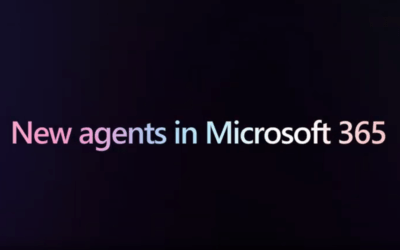Strengthen Your Cybersecurity with Data Loss Prevention
The threat of data breaches, whether accidental or malicious, looms large over organizations of all sizes. This is where Data Loss Prevention (DLP) comes in as a critical tool in safeguarding sensitive information. But where do you begin when developing a DLP strategy? Let’s walk through the essential steps to ensure that your data is protected and secure.
1. Start with a Security Framework
Before diving into the complexities of DLP, it’s essential to establish a comprehensive security framework. This framework serves as the backbone of your entire security posture. It starts with defining clear policy programs and associated controls. Think of these components as layers within your security system:
- Policy Programs: Develop a data management policy that clearly outlines the scope and goals of data protection within your organization.
- Supporting Programs: Create specific data loss programs that translate the policy into actionable initiatives.
- Associated Controls: These are the security measures like encryption or cloud access security brokers (CASBs) that enforce the policy and protect your data.
Policies must be well-documented, accessible, and easy to reference across the organization, ensuring that everyone understands the importance of DLP and how it is implemented.

2. The Vital Role of Data Classification
Once your security framework is in place, the next critical step is data classification. This process involves categorizing data based on its sensitivity and value, using predetermined tags or metadata. Proper data classification enables your DLP tools to effectively determine what data should be allowed, blocked, or managed in other ways.
Without proper classification, enforcing DLP controls becomes much more challenging. A key part of this step is ensuring that your DLP tools can “key off” this classification to automate actions and maintain seamless data security.
3. Applying DLP Policies Across the Network
In today’s hyper-connected environment, data can flow through many points in your network. Traditional DLP strategies may focus on areas like email or perimeter security, but modern data flows extend far beyond these. Here are key areas where DLP policies and controls should be applied:
- Endpoints: Devices such as laptops, desktops, and mobile phones are common sources of data loss. Endpoint detection and response (EDR) tools play a critical role here.
- Email Systems: Email remains a leading source of data breaches. Ensuring that both inbound and outbound emails are scanned for sensitive information, using encryption and anti-phishing tools, is crucial.
- Structured & Unstructured Data: Protect data at rest, in transit, and during storage, whether it’s structured (like databases) or unstructured (like documents and media files).
- Applications: Whether using homegrown apps, SaaS, or commercial off-the-shelf (COTS) applications, these systems need DLP controls to monitor interactions.
- Web Traffic: Monitoring web interactions and transactions can prevent sensitive information from being shared unintentionally over the web.
- Removable Media: Devices like USBs and external hard drives also need to be monitored as they present a significant risk for unauthorized data transfers.
4. Top Tools in DLP Solutions
There’s no one-size-fits-all solution when it comes to DLP tools. The best tool depends on your organization’s unique needs and infrastructure. However, a few categories of tools consistently come up as leaders in the space:
- Cloud Access Security Brokers (CASBs): These tools, like Palo Alto, Zscaler, Netskope, and Cisco help protect data in cloud environments by monitoring file sharing, SaaS, and data in transit.
- Endpoint Detection and Response (EDR): Solutions such as CrowdStrike Falcon and SentinelOne provide robust protection at the endpoint level.
- Email Security Solutions: Tools like Proofpoint, Mimecast, Cloudflare and Cisco offer email scanning, encryption, and anti-phishing capabilities.
- Identity and Access Management (IAM): Okta, Microsoft, and similar platforms safeguard against unauthorized access through role-based controls and multifactor authentication.
- Generative AI Security and Governance: As AI continues to be adopted, governance tools like Truyo, SurePathAI help ensure that AI systems are creating and enforcing policy.
5. The Importance of Identity and Access Management (IAM)
Lastly, no DLP strategy is complete without strong identity and access management (IAM) controls. Ensuring that only authorized individuals can access sensitive data is critical to preventing data loss. IAM tools automate access policies, support secure onboarding and offboarding workflows, and ensure compliance with standards like FIDO2 for secure credentials.
Take a Holistic Approach to Data Protection
Data loss prevention is a vital component of a comprehensive cybersecurity strategy, but it cannot exist in isolation. By starting with a strong security framework, properly classifying your data, applying controls across the network, and choosing the right tools, organizations can drastically reduce their risk of data breaches.
Data security is an ongoing effort, and as networks grow more complex, so too will the need for robust DLP strategies. But by following these steps, you can create a resilient DLP program that protects your most valuable assets: your data.
By incorporating these critical points into your DLP strategy, your organization will be better equipped to handle the evolving landscape of data security.

Robert Ochoa
Director, Cybersecurity Sales
Robert Ochoa joined the ANM team in late 2023 after serving in various leadership, networking, and cybersecurity roles across a 25+ year career at Okta, Cisco Systems, Calence Insight Networking, 3Com Corporation, AT&T Bell Labs, International Network Services, and Motorola Inc. Most recently Robert led the U.S. Public Sector SLED West cybersecurity teams at Cisco and Okta.
Prior to his corporate civilian experience as a security professional Robert served five years active duty in the US Army Signal Corps as COMSEC Officer / NCOIC Communication Security, domestic and overseas. His longest and most notable assignments included 7th Infantry Division 2nd Battalion 9th Infantry Regiment and 4th Battalion 229th Advanced Attack Helicopter Regiment. Following active-duty, he served in the Arizona National Guard where he trained various Infantry and Field Artillery teams in combat communication security and land navigation.
Robert’s career roles have included Network Systems Engineering, Cybersecurity Architecture, Product Specialization, Sales Leadership, and his current role as Director, Cybersecurity Sales at ANM. He is responsible for strategic client initiatives across ANM. Robert holds a Bachelor of Science, Business Information Systems degree from University of Phoenix, and several cybersecurity industry certifications.
Robert is a member of the FBI’s Arizona InfraGard, Arizona Cyber Threat Response Alliance, Information Systems Security Association (ISSA) Arizona Chapter, Information Systems Audit and Control Association (ISACA), and the International Information Systems Security Certification Consortium (ISC2). He has lectured at security user groups, large enterprises, colleges and universities, and government agencies around the U.S.
Recap from Ignite’s General Session regarding Copilot and Copilot Studio
In today’s General Session on “Unlock the value of Microsoft 365 Copilot and Copilot Studio,” the focus was on Copilot Actions and Copilot Agents. Microsoft continued from where the keynote session left off yesterday, providing more details on these features and their...
Key Takeaways from Microsoft Ignite 2024 Keynote: Copilot, Security, and AI Innovations
During the Keynote of Microsoft Ignite, several announcements were made. Copilot and Security were highlighted, as over 70% of the Fortune 500 companies are now using Copilot. Some notable Copilot features include Screen Understanding, Copilot Actions, and Copilot...
Why Manufacturers Need Modern Security Solutions for Safe, Efficient Operations
In today’s industrial landscape, manufacturing environments face unique security challenges that go beyond basic surveillance. To stay competitive and safe, manufacturers must adopt advanced security solutions like alarms, cameras, access control systems, and air...


